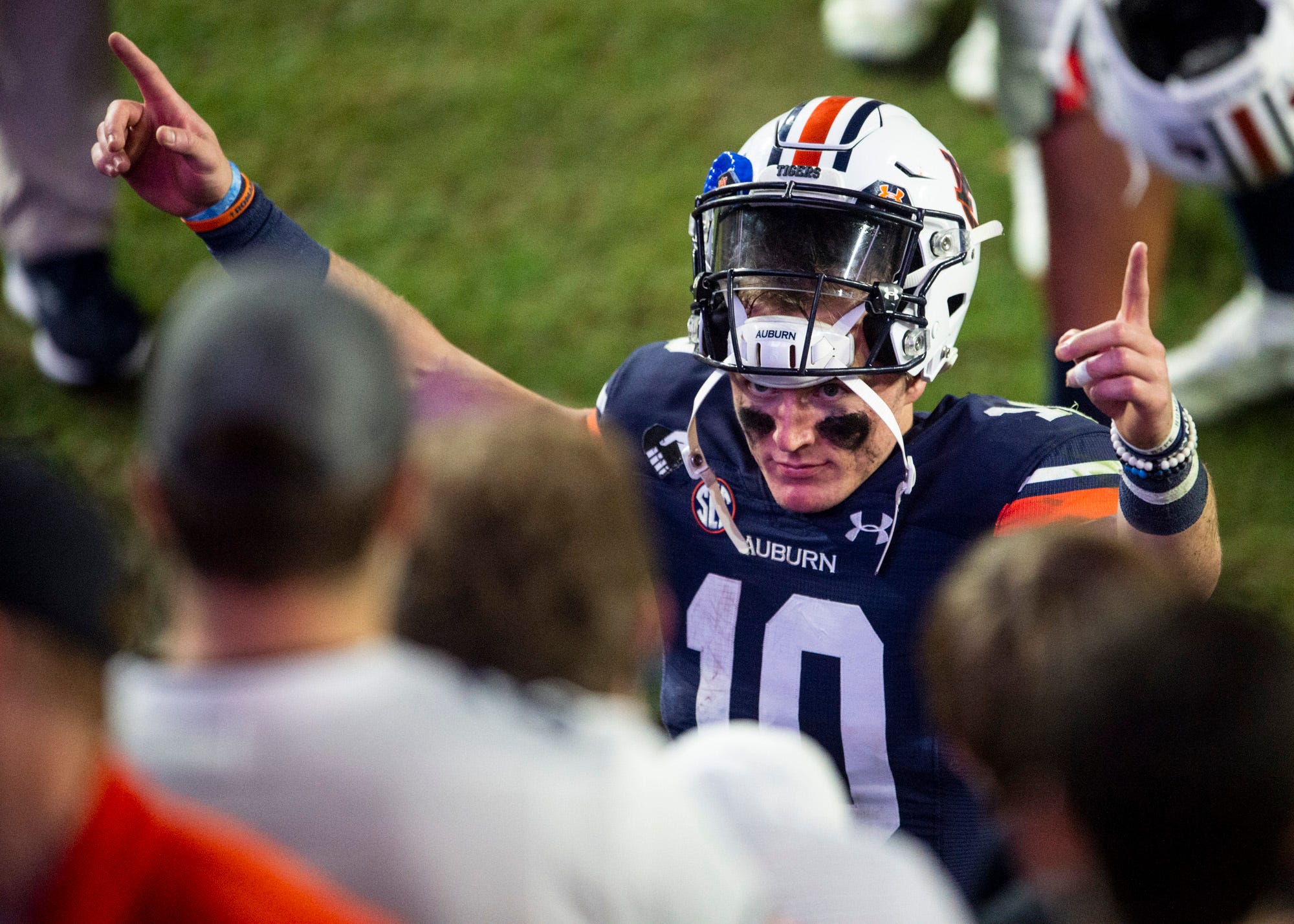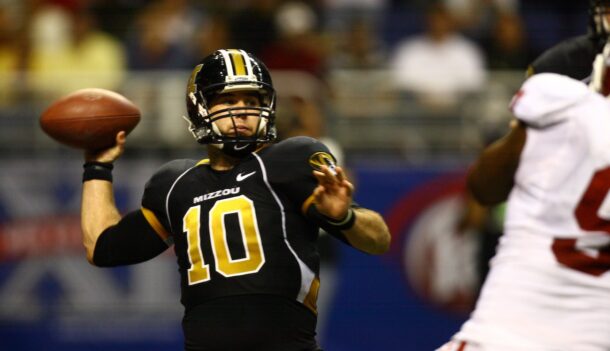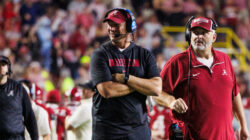
July 1, 2021 will be known as the day that college sports changed forever. Officially.
In case you somehow haven’t heard, college athletes in all states are now able to benefit off their own Name, Image and Likeness. We already saw a wave of social media posts from athletes across the college sports landscape. Some national deals are already in the works, and plenty of local ones are, as well.
That doesn’t mean college sports are going to be significantly better or worse from this week’s landmark beginning. But it does mean that there were plenty of takeaways.
Here’s what I gathered from seeing the first day of the NIL era unfold:
1. There are a lot of benefits to this
I don’t root for anarchy. I think most rules are in place for a reason as it relates to college sports.
But man, there was something encouraging about watching college athletes actually benefit from their individual worth. And before you tell me “what about the scholarship,” I’m referring to what they’re making beyond that. Not every scholarship athlete has value to make money off their likeness. Many do, but not all.
It’s a good thing that there’s no longer the NCAA standing in the way of a college athlete making some money to sign their own name or to post on their own social media account. For all the past athletes who had the hammer dropped on them for receiving impermissible benefits like Reggie Bush and Todd Gurley, Thursday was meaningful.
Lives will be impacted from this in a major way. For kids who grew up in poverty, or perhaps those with families who are still living in poverty, there are benefits that go far beyond have a little extra spending money on the weekends. No matter what side you fall on the NIL issue, I think we can all agree that’s a massive win.
2. What a rough day for the “only few will benefit” crowd
What a lazy, outdated take that was.
While it’s cool for college athletes to “get it,” we are going to see a lot of delusion this week. The percentage of athletes who can successfully sell a Hanes T-shirt with their logo on it will be less than 0.1%
— Darren Rovell (@darrenrovell) July 1, 2021
(Rovell then proceeded to fire off several tweets on Thursday with college athletes involved in sponsorship deals.)
Yes, it’s true that not everyone is getting a Nike deal. Last I checked, you don’t need to be a spokesperson for a Fortune 500 company to make money off your NIL. There’s this thing called social media, and boy, let me tell you. It’s wild.
It’s a place where you can do things like “sponsored posts” for anyone and everyone who has a business. Ever wonder how reality TV stars make money after their 15 minutes of fame is up? I’m not saying college athletes are going to become reality TV stars, but goodness, it’s wildly easy to make money for athletes with any sort of platform.
You don’t just have to be Bo Nix out here selling sweet tea or Derek Stingley Jr. partnering with Walk-On’s. Look at some of these other ad deals from non-national names:
- Tennessee RB Jabari Small, Cameo ($25 a video)
- Northwestern QB Ryan Hilinski, Cameo ($50 a video)
- Michigan State K Matt Coghlin, LockedOnSpartans Podcast
- Arkansas WR Trey Knox, PetSmart
- Purdue OL Eric Miller, Extra Points Newsletter
- LSU OL Austin Deculus, Yoke Gaming
- Jackson State DE Antwan Owens, Three Kings Grooming
Again, that’s just a sampling of the guys who are already capitalizing on this. And even if it is just a couple thousand dollars here or there, that’s still significant money for these kids. Not every ad deal needs to be a national shoe campaign.
By the way, Knox had 7 catches for 70 yards last year, and at best, Arkansas fans are hoping he can become the team’s No. 2 receiver this year. The guy got himself a national ad deal:
We’re so excited to be partnering with Arkansas wide receiver, Trey Knox. We’d do anything for pets and Trey would do anything for his pup, Blue. @Fbu1Tk #AnythingforPets pic.twitter.com/TZztDfqNpA
— PetSmart (@PetSmart) July 1, 2021
Good for you, man. Best ad of the day, in my opinion.
Cameo alone is going to allow for so many of these athletes to rake in cash. I’m not sure how athletes will navigate that midseason or if they’ll go off Cameo because those videos often guarantee a certain amount of response time.
Still, though. Whether it’s Cameo, a local T-shirt company, a podcast, a barbershop or whatever, there are tons and tons of businesses looking to work with college athletes, especially before the universal rules come out.
3. I know everyone is piling on Dabo Swinney’s comments, but …
If you missed it, the Clemson coach was trending nationally on Thursday for his 2019 comments that he didn’t want to “professionalize” college athletics and that if they did, maybe he’d go to the NFL.
But as much as Swinney’s optics were awful — it was after he signed a contract for 10 years and $93 million — there’s a touch more context needed there. Swinney’s comments resurfaced Thursday because obviously now that athletes can make money off their NIL, it has changed the concept of amateurism. Swinney, however, opposed the pay-for-play model, not the NIL model.
FWIW, and I know we’re parsing here, Dabo has actually said he’s ok with NIL. It’s schools paying players without tying it to education that he dislikes. https://t.co/YivKKpBEiH
— 💫🅰️♈️🆔 (@ADavidHaleJoint) July 1, 2021
In Swinney’s defense, there’s a difference between a university cutting a check for a college athlete because of a TV contract as opposed to a college athlete earning money for services.
And for what it’s worth, Hale was the one who wrote the original ESPN story with Swinney’s 2019 comments. Does that mean Swinney is totally all-in with NIL and he’s about to become its biggest advocate? No, but being so opposed to it probably wouldn’t be the best look for recruiting.
Ok, now forget you read that and go back to poking fun at Dabo.
4. If you’re worried about how many athletes have deals, remember the time of year
It’s the beginning of July. It’s the single slowest time of year in the college athletics calendar. Remember that now is as open a time as ever for college athletes to be lining up deals. It’s a totally different ballgame once the season starts. There’s nothing stopping a coach from having internal discipline for any lack of focus as a result of that.
That’s still going to win out in college sports. At least I think. So many of these athletes are on the brink of making life-changing money and not just money that’d be cool to have in college. There’s a major difference in those things.
Will everyone understand that reality? Probably not. It wouldn’t be surprising if there were some issues for coaches to navigate with these new revenue opportunities. Even think about a viral moment in a postgame press conference turning into an ad deal.
But I still come back to the belief that the new influx of opportunities certainly made Thursday feel a bit more overwhelming than what it’ll probably will look like mid-season.
5. Surely it won’t always be this wide open … right?
The NCAA is like the dad who gets asked by their kid of they can stay up late. But instead of, you know, actually being a parent, the dad defers to mom. Mom, in this case, is the universities, which have basically been asked to self-govern this whole deal. Thoughts and prayers to compliance departments.
My guy Wes Blankenship nailed this:
Compliance directors keeping track of college athletes’ NIL endorsements pic.twitter.com/z5gbnCbDj8
— Wes Blankenship (@Wes_nship) July 1, 2021
What a wild day it is to be a compliance department when you’ve probably got athletes left and right asking you if they can do a deal with a specific brand.
We’ve seen conferences, including the SEC, come out and express support but concern over the lack of universal rules for NIL. Is it still really a state-by-state issue? And is the NCAA really going to let things run wild before forcing the federal government to step in?
We don’t know. But as of right now, market value is a loose term. Should there be a cap on earnings? Will there be a period in which earnings aren’t allowed? How do agents factor into all of this in the end? As of right now, the NFLPA reportedly informed agents that they’re allowed to have contact with college athletes.
There are some state-by-state rules in terms of when and how NIL opportunities are disclosed through the school.
Mississippi’s NIL law has the same provision, I believe. Approval lead time is one of the notable differences among state laws/school rules, as well as an athlete’s ability to use school marks in NIL ventures. https://t.co/mqNu06BuCR
— Ross Dellenger (@RossDellenger) July 1, 2021
Will some schools be more lenient than others to try to gain a recruiting advantage? Or will the desire to avoid total anarchy prevent that? Places like LSU are already allowing the school’s likeness and facilities to be used in NIL matters (if approved by the university) while others are not … for now.
We just don’t know the full extent of that. Not yet at least.
Something tells me we’ll be saying those words a lot in the early stages of the NIL era.
Connor O'Gara is the senior national columnist for Saturday Down South. He's a member of the Football Writers Association of America. After spending his entire life living in B1G country, he moved to the South in 2015.







